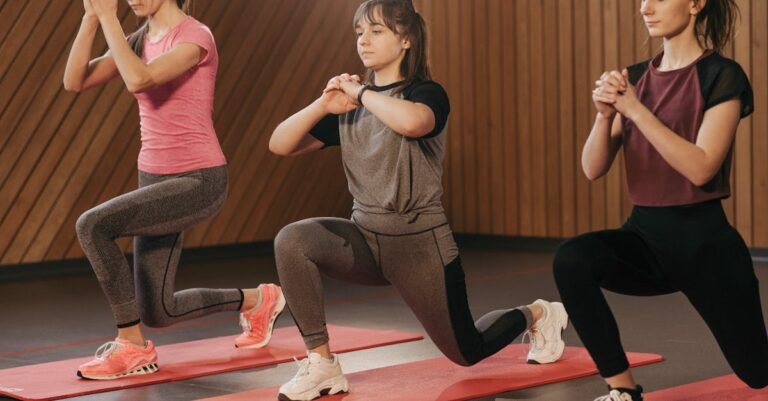Ever walk into the gym, look at all the leg machines and free weights, and just feel… lost? You know you want stronger, more toned legs – maybe to feel more powerful climbing stairs, rock those jeans, or just keep up with life – but figuring out *how* is a whole other story. It’s easy to feel overwhelmed or just stick to the same couple of exercises hoping for the best. Well, you’re in the right place! This article is gonna cut through the confusion. We’ll break down a super effective gym leg workout, piece by piece, so you know exactly what to do and why. Stick around, and you’ll walk away with a clear plan to build those legs you’ve been wanting.
Why Strong Legs Matter (More Than You Think)
Okay, let’s be real, strong legs look good. But it’s about way more than just aesthetics! Think about your everyday life. Picking up groceries? Climbing stairs? Chasing after your dog (or kids!) at the park? That’s all powered by your legs and glutes. Having strong legs makes all these everyday tasks easier and less tiring. Plus, your leg muscles are some of the biggest in your body. Working them actually helps boost your metabolism, meaning you burn more calories even when you’re just chilling. It’s also key for preventing injuries, especially in your knees and back, because strong legs provide better support and stability. So yeah, leg day isn’t just about looks; it’s about building a stronger, more capable you for everyday life.
Prep Time: The Essential Warm-Up
Alright, before you even think about loading up a barbell, we gotta talk warm-ups. Jumping straight into heavy lifting is like trying to sprint the second you roll out of bed – not a great idea! Your muscles need a heads-up that they’re about to work. A good warm-up gets the blood flowing, loosens up your joints, and literally warms up your muscle tissues, making them more pliable and less prone to injury. Think 5-10 minutes of light cardio like jogging or cycling, followed by dynamic stretches. Dynamic means moving stretches, not holding one position. Stuff like:
- Leg swings (forward/back and side-to-side)
- Walking lunges (no weight)
- Bodyweight squats
- Hip circles
This tells your legs, “Hey, wake up! It’s go time!” Skip the long, static holds (like touching your toes for 30 seconds) until *after* your workout.
The Cornerstones: Mastering Compound Moves
If you want the most bang for your buck on leg day, compound exercises are where it’s at. These are moves that work multiple muscle groups and joints all at once. Think of them as the main course of your leg workout. The two absolute kings? Squats and Romanian Deadlifts (RDLs).
Squats: The classic. Done right, they hit your quads (front of thighs), glutes (your butt), and hamstrings (back of thighs). Imagine you’re about to sit down in a chair that’s slightly too far behind you. Keep your chest up, back straight, and lower down until your thighs are at least parallel to the floor (or as low as your mobility comfortably allows). You can use a barbell, dumbbells, or even just your bodyweight.
Romanian Deadlifts (RDLs): These are fantastic for targeting your hamstrings and glutes. Unlike a conventional deadlift that starts from the floor, RDLs start from a standing position. Holding dumbbells or a barbell, keep a slight bend in your knees (but don’t squat!). Hinge at your hips, pushing your butt back while keeping your back straight, and lower the weight towards the ground. You should feel a good stretch in your hamstrings. Don’t round your back! Go as low as you can while maintaining that straight back, then squeeze your glutes to return to the starting position. These two moves form a powerful foundation.
Sculpting the Details: Key Assistance Exercises
While squats and RDLs are your heavy hitters, assistance exercises help target specific areas and add extra volume to round out your workout. Think of these as the important side dishes that complete the meal.
- Lunges: Great for hitting each leg individually, which helps iron out strength imbalances. They work quads, glutes, and hamstrings. You can do walking lunges, stationary lunges, or reverse lunges. Holding dumbbells makes them harder.
- Leg Press: This machine lets you push heavy weight with your legs while supporting your back. It primarily targets the quads but can hit glutes and hamstrings depending on foot placement. It’s a good alternative if you’re not quite ready for heavy barbell squats or want to add more quad work.
- Hamstring Curls: Usually done on a machine (seated or lying). These directly isolate the hamstrings. Since RDLs hit them well, these add extra focus, kinda like doing bicep curls after pull-ups.
- Calf Raises: Don’t forget the lower legs! Standing or seated calf raises target the muscles in your calves. Simple but effective for building those lower leg muscles.
Adding a few of these after your main compound lifts helps ensure you’re working all the muscles thoroughly.
Your Game Plan: Building the Actual Workout
Okay, so how do you put this all together? Here’s a sample structure. Remember, this is just a template – listen to your body!
Warm-up: 5-10 mins light cardio + dynamic stretches
Workout:
- Squats (Barbell or Dumbbell): 3-4 sets of 8-12 reps
- Romanian Deadlifts (RDLs – Dumbbell or Barbell): 3-4 sets of 10-15 reps
- Lunges (Dumbbell or Bodyweight): 3 sets of 10-12 reps per leg
- Leg Press: 3 sets of 12-15 reps
- Hamstring Curls: 3 sets of 12-15 reps
- Calf Raises (Standing or Seated): 3 sets of 15-20 reps
Rest: Take about 60-90 seconds rest between sets. For the heavier compound lifts like squats, you might need a bit longer.
Cool-down: 5-10 mins light stretching (static holds are okay now)
Start with weights that feel challenging but allow you to maintain good form for all the reps. As you get stronger, you can gradually increase the weight or reps.
Play it Smart: Form, Rest, and Fuel
This is super important: form is everything. Lifting heavy weight with sloppy form is a fast track to injury and won’t even build muscle effectively. Imagine building with Lego bricks – if you stack them crookedly just to go faster, the whole thing will be unstable and likely fall. It’s better to use a lighter weight you can control perfectly than to ego lift and risk getting hurt. If you’re unsure about your form, watch videos, ask a knowledgeable gym-goer or trainer, or even record yourself.
Also, your muscles don’t grow *during* the workout; they grow *between* workouts. Rest days are crucial! Don’t train legs hard every single day. Give them at least 48-72 hours to recover before hitting them hard again. Listen to your body – if you’re feeling excessively sore or fatigued, take an extra rest day. Finally, remember that muscles need fuel to repair and grow. Eating enough protein and getting enough sleep are just as important as the workout itself. Think of it like providing the building materials (protein) and construction time (sleep) for your muscles to rebuild stronger.
So, there you have it – a solid game plan for building stronger, more powerful legs at the gym. We’ve covered why leg training is essential beyond just looks, the importance of warming up properly, and the key exercises – both the big compound lifts like Squats and RDLs, and important assistance work like Lunges and Leg Press. We also mapped out how to structure your workout and stressed the golden rule: always prioritize good form over lifting heavy. Remember to listen to your body, allow for rest and recovery, and fuel yourself properly.
Building strong legs takes time and consistency, but it’s totally worth it. You’ll feel more capable in everyday life, boost your metabolism, and build a foundation of strength. No more wandering aimlessly around the leg machines – you now have a clear path forward. Get after it!









